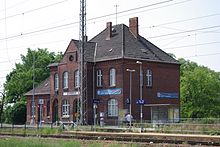Royal Prussian Military Railway
| Royal Prussian Military Railway | ||||||||||||||||||||||||||||||||||||||||||||||||||||||||||||||||||||||||||||||||||||||||||||||||||||||||||||||||||||||||||||||||||||||||||||||||||||||||||||||||||||||||||||||||||||||||||||||||||||||||||||||||||||||||||||||||||||||
|---|---|---|---|---|---|---|---|---|---|---|---|---|---|---|---|---|---|---|---|---|---|---|---|---|---|---|---|---|---|---|---|---|---|---|---|---|---|---|---|---|---|---|---|---|---|---|---|---|---|---|---|---|---|---|---|---|---|---|---|---|---|---|---|---|---|---|---|---|---|---|---|---|---|---|---|---|---|---|---|---|---|---|---|---|---|---|---|---|---|---|---|---|---|---|---|---|---|---|---|---|---|---|---|---|---|---|---|---|---|---|---|---|---|---|---|---|---|---|---|---|---|---|---|---|---|---|---|---|---|---|---|---|---|---|---|---|---|---|---|---|---|---|---|---|---|---|---|---|---|---|---|---|---|---|---|---|---|---|---|---|---|---|---|---|---|---|---|---|---|---|---|---|---|---|---|---|---|---|---|---|---|---|---|---|---|---|---|---|---|---|---|---|---|---|---|---|---|---|---|---|---|---|---|---|---|---|---|---|---|---|---|---|---|---|---|---|---|---|---|---|---|---|---|---|---|---|---|---|---|---|
| Overview | ||||||||||||||||||||||||||||||||||||||||||||||||||||||||||||||||||||||||||||||||||||||||||||||||||||||||||||||||||||||||||||||||||||||||||||||||||||||||||||||||||||||||||||||||||||||||||||||||||||||||||||||||||||||||||||||||||||||
| Native name | Königlich Preußische Militär-Eisenbahn (1875–1918/19) | |||||||||||||||||||||||||||||||||||||||||||||||||||||||||||||||||||||||||||||||||||||||||||||||||||||||||||||||||||||||||||||||||||||||||||||||||||||||||||||||||||||||||||||||||||||||||||||||||||||||||||||||||||||||||||||||||||||
| Line number | 6514 Zossen–Jüterbog | |||||||||||||||||||||||||||||||||||||||||||||||||||||||||||||||||||||||||||||||||||||||||||||||||||||||||||||||||||||||||||||||||||||||||||||||||||||||||||||||||||||||||||||||||||||||||||||||||||||||||||||||||||||||||||||||||||||
| Locale | standard gauge | |||||||||||||||||||||||||||||||||||||||||||||||||||||||||||||||||||||||||||||||||||||||||||||||||||||||||||||||||||||||||||||||||||||||||||||||||||||||||||||||||||||||||||||||||||||||||||||||||||||||||||||||||||||||||||||||||||||
| ||||||||||||||||||||||||||||||||||||||||||||||||||||||||||||||||||||||||||||||||||||||||||||||||||||||||||||||||||||||||||||||||||||||||||||||||||||||||||||||||||||||||||||||||||||||||||||||||||||||||||||||||||||||||||||||||||||||
The Royal Prussian Military Railway (German: Königlich Preußische Militär-Eisenbahn), also called the Königliche Militär-Eisenbahn (Royal Military Railway, KME), was a Prussian state railway, operated by the army, between Schöneberg (now part of Berlin) and Kummersdorf (now in the municipality of Am Mellensee), later extended to Jüterbog.
History
After the
Also in 1897, a third rail was inserted in the track between Rehagen-Klausdorf and Klausdorf to permit tests of narrow-gauge operations. This was discontinued in 1900 and the third rail was removed.
Civilian use
In the interests of neighbouring communities and at the urging of the Berlin-Dresden railway and the public, civilian operations were approved by the military railway first for freight between Berlin and Zossen and then for passengers between Zossen and Kummersdorf Schießplatz. Passenger traffic was also approved between Berlin and Zossen from 1 November 1888. A special suburban fare was introduced on the line between Berlin and Zossen on 1 October 1891.

After the end of World War I, the
Passenger operations continued on the remaining section from Zossen to Jüterbog until the 1990s. Passenger traffic on the Sperenberg–Jüterbog section was abandoned on 2 June 1996 and the abandonment of the last remaining section of the line from Zossen to Sperenberg followed on 18 April 1998. Freight traffic ended on 2 June 1996 and the entire Zossen–Jüterbog section was closed.
High-speed tests

Beginning in 1901, experiments with electric vehicles and high-speed steam locomotives were carried out between Marienfelde and Zossen. The Research Association for High-speed Electric Railways (Studiengesellschaft für elektrische Schnellbahnen), which was founded on 10 October 1899 and included AEG and Siemens & Halske, electrified a length of 33 km of the line with three-phase power at 10 kV/50 Hz, using three overhead lines on poles that were about 5 to 7 m high located at the side of the track. Speeds greater than 160 km/h were achieved for the first time on this track in 1901. After improvements to the superstructure and the vehicles, 200 km/h was exceeded on 7 October 1903. The experimental railcars of AEG established a new world record of 210.2 km/h on 27 October 1903.
High-speed tests with Prussian state railways steam locomotives S 9 Altona 561 and Altona 562 were also undertaken in 1904.
Reuse after the closure of main-line operations
The railway infrastructure has been heritage-listed since 2002. An exhibition on the history of KME has been established in the entrance hall of Sperenberg station. Deutsche Bahn AG sold the line in 2003 to Erlebnisbahn GmbH & Co. KG, based in Mellensee-Saalow station, that has since operated tourist-operations with draisines on the Zossen–Jänickendorf section of the line. The Erlebnisbahn GmbH & Co. KG has been approved to operate railway infrastructure company since 27 August 2007. The railway remains closed for train traffic.
Notes
- ISBN 978-3-89494-139-0.
References
- Peter Bley (2000). Königlich Preußische Militäreisenbahn (in German). Düsseldorf: Alba Publikation. ISBN 3-87094-361-0.
- Carsten Preuß (2004). Die Königlich Preußische Militäreisenbahn (K.M.E.) als Versuchsstrecke (in German). Zossen: Rose Werbung & Mehr.
- Carsten Preuß; Hiltrud Preuß (2007). "Die Königliche Militär-Eisenbahn und ihre Empfangsgebäude". Brandenburgische Denkmalpflege (in German) (16). Berlin: 62–69. ISSN 0942-3397.
- Hille (1901). Die Königlich Preußische Militär-Eisenbahn 1875–1900 (in German). Berlin: Militärverlag.
- Hans Georg Kampe (1998). Preußische Eisenbahntruppen 1871-1945. Die Königliche Militäreisenbahn und die Eisenbahnübungsplätze im Süden Berlins (in German). Berlin: Projekt + Verlag Dr. Erwin Meißler. ISBN 3-932566-20-3.
- Kurt Pierson (1979). Die Königl. Preußische Militär-Eisenbahn (in German). Stuttgart: Motorbuch Verlag. ISBN 3-87943-658-4.
- Bestimmungen über die Gewährung von freier Fahrt und Fahrpreis-Ermäßigung auf der Königlichen Militär-Eisenbahn (in German). Berlin: Reichsdruckerei. 1894.
External links
- "Technical information" (in German). Bahnstrecken in Brandenburg. Retrieved 20 May 2015.
- "Militärbahn" (in German). Berliner-Bahnen.de. Retrieved 20 May 2015.
- "Die Königlich-Preußische-Militär-eisenbahn (K.M.E.)" (in German). Baruther Urstromtal. Archived from the original on 23 September 2015. Retrieved 20 May 2015.
